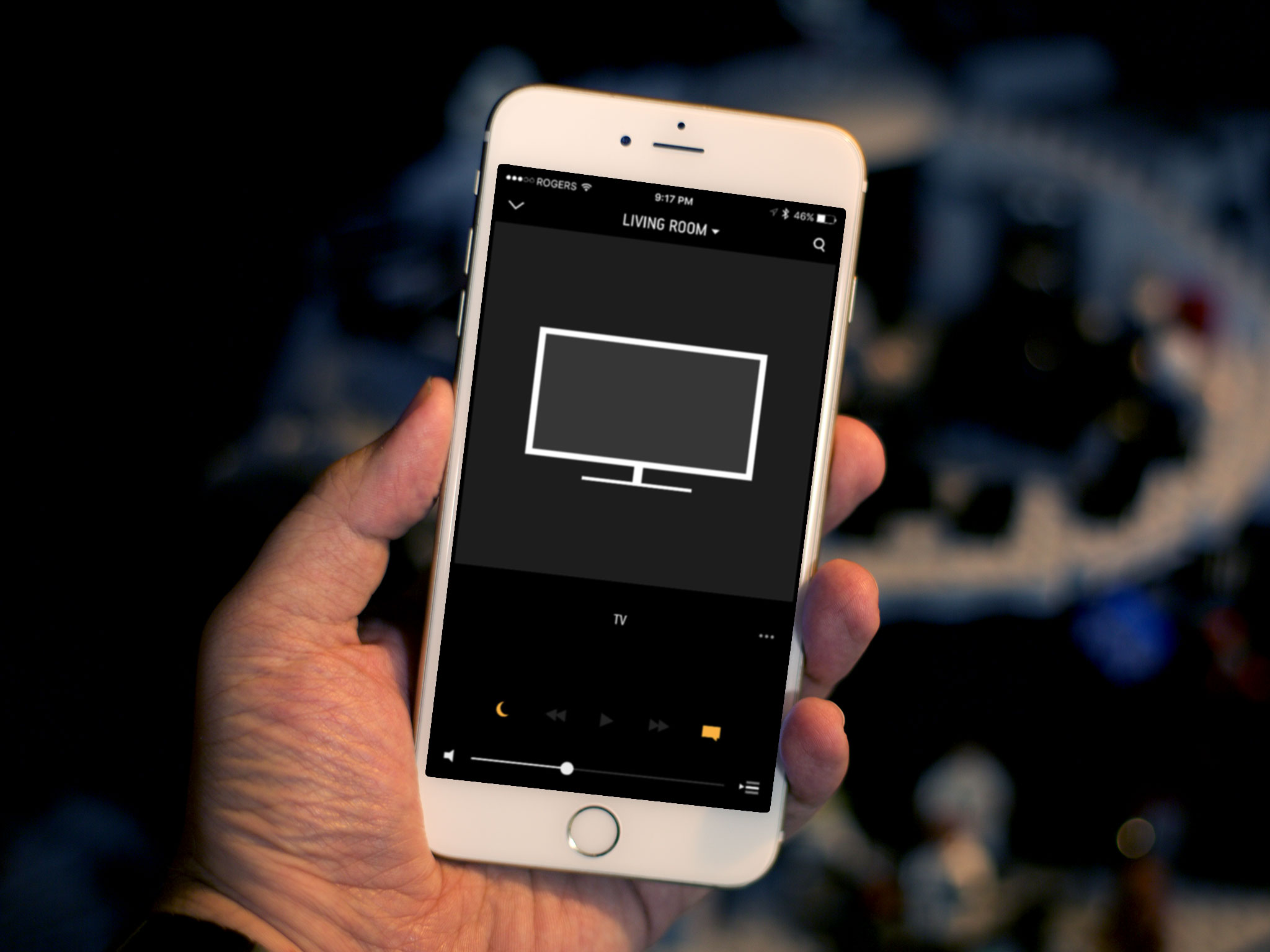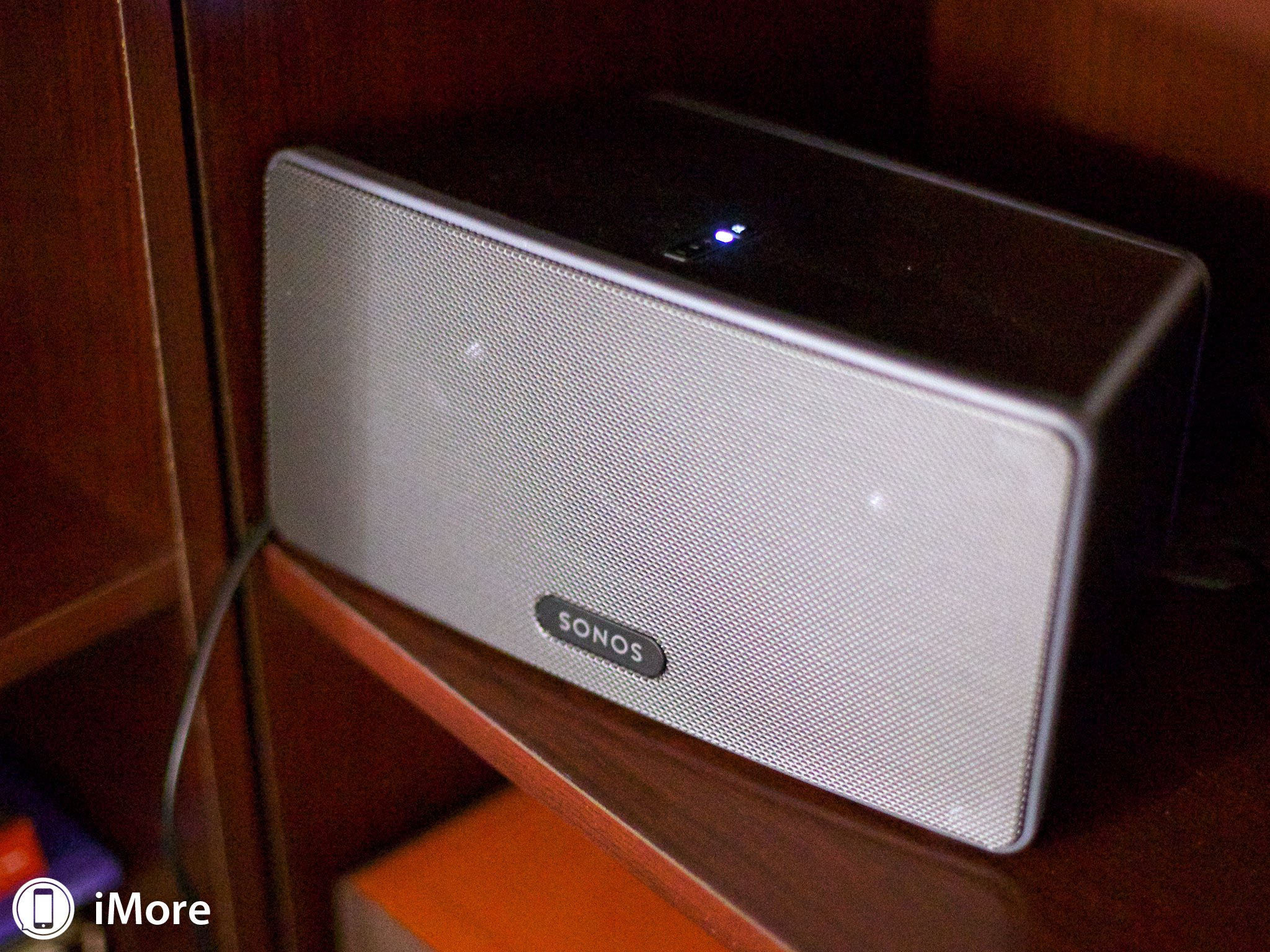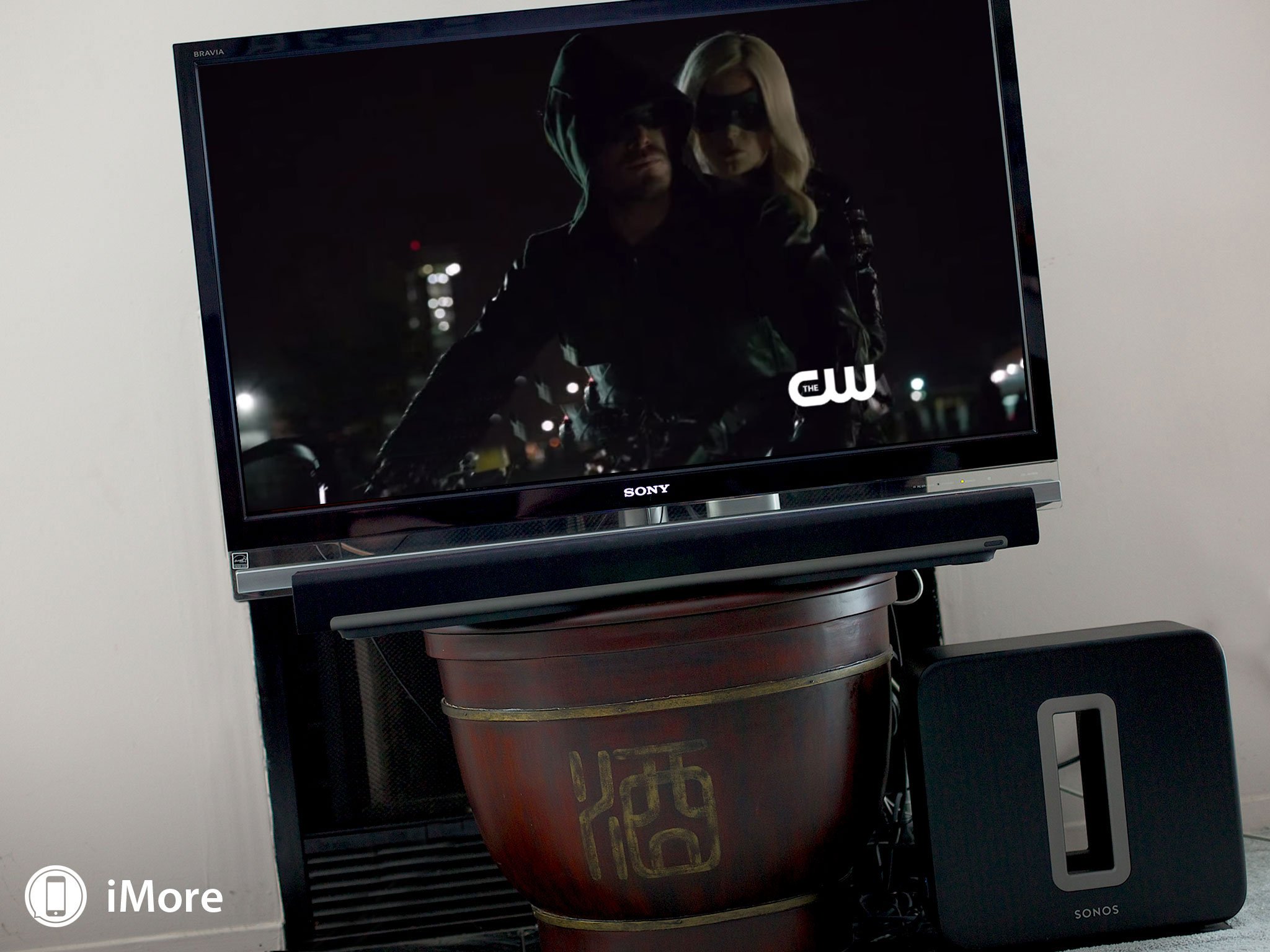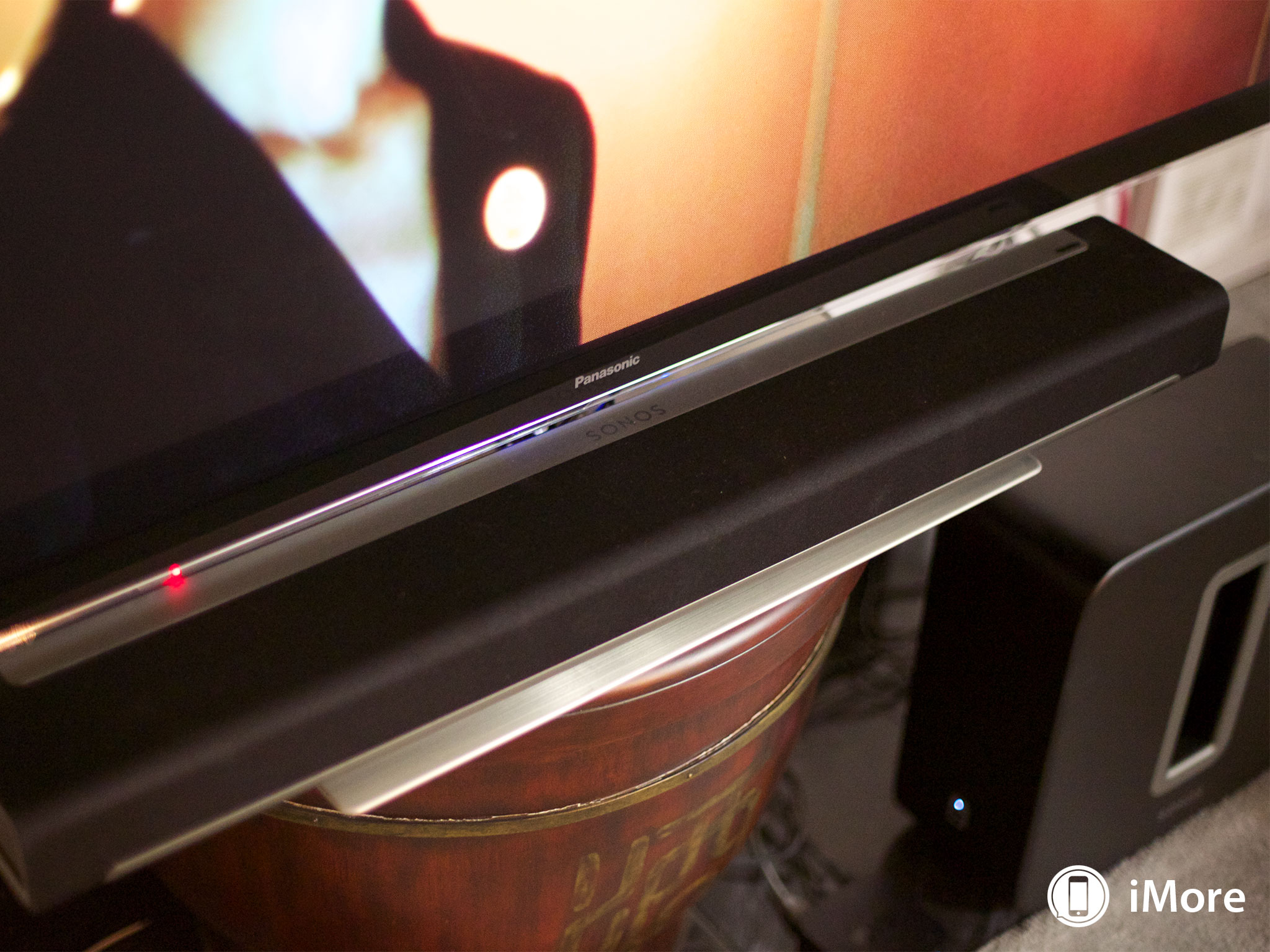Sonos has been making excellent iPhone- and iPad-controlled smart, connected speakers for years. With a Sonos home theater system you can get all that wireless action and up to 5.1 surround sound as well. But how well does it all work?
Road to Sonos
Prior to Sonos I had a 7.1 surround sound system based off of a Pioneer receiver. About a year after I bought it — and after the warranty expired — it started vomiting bogus high-definition copy protection (HDCP) errors and refusing to play any content from my Apple TV or Blu-Ray player. I spent a few weeks cursing and telling Hollywood where they could go shove their consumer hostility. Then I went out and got Sonos.
There were two reasons why I went Sonos. First, it uses digital audio to connect and not HDMI, so Hollywood couldn't prevent me from watching content I legally bought and paid for anymore. Second, I could control it with my iPhone or iPad. So, sold.
Now, yes, Sonos is expensive. Audio gear in general is expensive, though. You can spend millions of dollars on it if you have the obsession and the bank to back it up with. Sonos, for what it delivers, didn't feel exorbitant to me in the least. It's not budget priced, and for a lot of people, that'll be a deal breaker. But I'm going through a phase of buying less, but buying better. I'm looking for value, not price. I'm also willing to buy one element at a time, and space them out. That approach might not suit everyone, but it's currently suiting me.
Now, If you already have a traditional speaker system, you can start with that. Just get a Sonos Connect and plug it into your receiver, or get a Sonos Connect:AMP and plug straight in.
Since I'd ditched my busted Pioneer, I went all in with the home theater.
Playbar
The home theater is based around a Playbar, which is the Sonos version of a Soundbar. Soundbars have been replacing traditional "home theaters in a box" for years now. Their convenience level has always been high enough, and they've now gotten good enough, that sticking them below a TV is simply more attractive for most people than fiddling with a multiple-component set up. Since both soundbar-based home theaters and Sonos systems are designed to be simple to set up and easy to expandable, it really is a match made in geek heaven.
The Playbar has six mid-woofers to cover the low frequencies and three tweeters to cover the high, all driven by nine class-D amplifiers. The left and right tweeters are angled out to project sound as widely as possible.More importantly, it's a "smart" component. According to Sonos, the Playbar makes 24 million calculations per second, adding, subtracting, equalizing, and otherwise intelligently adjusting each element to keep the system in balance.
If you already have a Sonos Bridge in your home, or your network — like mine — is next to your TV, you can start with just the Playbar. Mount it on the wall if that's where your TV is, or place it on the stand if not. Plug it into your router over ethernet and your TV over optical audio, and you're good to go. (If your router is elsewhere, however, you will need a Sonos Bridge as well to get it on the network since at least one component has to be on a hardline to the internet.)
Now, that's two wires in what a lot of people say is a "wireless" setup, but neither of them are speaker wires. Like I said, I have a large, open, octagonal living room, so eliminating the speaker wires is a huge plus.
Plugging right into the TV also eliminates the need for a separate amp, though it has advantages and disadvantages. On the negative side, it means your TV needs to have enough HDMI ports to support all your video gear. Since I cut the cord years ago, I have no cable or satellite box to worry about, and since I'm not much of a gamer anymore, I have no consoles, new or old, to plug in. That just leaves my main video source, an Apple TV and my occasional source, a Blu-Ray player, and my TV can fit both just fine.
Also, while the Sonos system supports Dolby Digital 2.0, Dolby Digital 5.1, and PCM, it doesn't support 7.1, DTS, Dolby Atmos, or other technologies an independent receiver might. While I admit I lust for Atmos, I'd settle for 7.1 for now.
Apple TV finally supports 7.1 surround, and iTunes content is starting to go 7.1. Sonos not already being there with support is irksome. Many mainstream customers may not care, but given the cost, flexibility of the system, and how many enthusiasts like both Sonos and higher speaker numbers, it feels like a major missing feature.
Sonos Controller app

Once the Playbar is plugged in, your download the Sonos Controller app to your iPhone and/or iPad, and that's where the magic starts. It's easy to use the Sonos app, and as you follow along, it'll help you set up the entire system, disable your TV sound, and even map the volume control on your TV remote to the Sonos system. I mapped my Apple TV Siri Remote. So great!
By itself, the Playbar handles HiFi stereo and sounds good. When you start expanding the setup, however, it sounds great. That's where the new Play:1 or the Play:3 speakers come in. Independently, they're excellent ways to bring music to any room in your house, paired together, and with the Playbar, and they become something more — surround sound.
Play:1... or Play:3

The standard Sonos home theater package uses Play:1 speakers, but you can also use the bigger Play:3. The Play:1 is less expensive and less powerful, the Play:3 more expensive but better able to fill a larger room. Both work brilliantly. The Play:1 has a custom-designed 3.5-inch woofer and tweeter, each with a dedicated amplifier. The Play:3 has a bass radiator, two mid-range drivers, and a tweeter, and again, dedicated amplifiers for each. Since my living room is large, I went with the Play:3.
To bring the surround speakers into the system, you simply fire up the Sonos app again, detect the additional components, give a rough estimate of their distance as close or far from the primary listening location, and you're immediately good to go.
Sub

If you want to take things a step further and go full-on 5.1 surround, you can add a Sonos Sub as well. The Sub has two force-cancelling speakers and two class-D amplifiers, and that's more than enough to send Kaiju/Jaeger-sized tremors across your floor and up your spine. Again, just plug it in, launch the Sonos app, and it gets added to the setup.
Once you're fully set up, everything is controllable via your iPhone and/or iPad. You can do all sorts of useful things, like toggle Night Sound Mode, which lets you keep watching while your neighbors keep sleeping, and Speech Enhancement, which lets you hear what the actors are saying even often the often onerously loud soundtracks.
You can also increase or decrease the power of the surround speakers, the sub, introduce an audio delay if necessary, and, of course, manage any music services you might be using with it.
Unfortunately, Sonos doesn't support AirPlay. I've heard there's some issue with multi-room licensing, but whatever the reason, it's beyond frustrating. I have an Apple TV, so I can AirPlay through that. I could also AirPlay through an AirPort Express if I had to. But it's not convenient, and convenience is the whole reason I went with Sonos.
Also, while I'm being all complaint guy, HomeKit for full-on Siri control would make things even better. I'd be willing to buy a new Playbar or Connect just for that.
Bottom line
Overall, I'm extremely happy with the Sonos home theater. From iTunes movies and TV to Netflix, everything works well and sounds great. I can't say it sounds better than my previous, wired, Pioneer 7.1 surround system, but it sounds good enough, and is so much more powerful and convenient, that the end result is absolutely better.
Highly recommended.
○ Sonos buyers guide
○ Sonos for iPhone and ipad
○ Sonos news
○ Sonos discussion forum
○ Reviews: Home theater, Play:5
○ More: Sonos One; Play:1, Play:3, Play:5, Connect, Connect:Amp, Playbar, Sub

Rene Ritchie is one of the most respected Apple analysts in the business, reaching a combined audience of over 40 million readers a month. His YouTube channel, Vector, has over 90 thousand subscribers and 14 million views and his podcasts, including Debug, have been downloaded over 20 million times. He also regularly co-hosts MacBreak Weekly for the TWiT network and co-hosted CES Live! and Talk Mobile. Based in Montreal, Rene is a former director of product marketing, web developer, and graphic designer. He's authored several books and appeared on numerous television and radio segments to discuss Apple and the technology industry. When not working, he likes to cook, grapple, and spend time with his friends and family.

